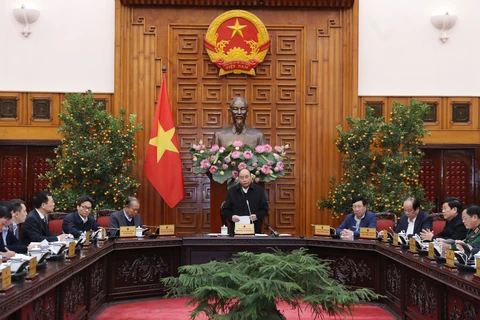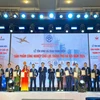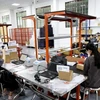Hanoi (VNA) – Vietnam has planned drastic measures to support exports following the suspension of cross-border trade with China due to the novel coronavirus, known as 2019-nCoV.
General Director of the Foreign Trade Agency under the Ministry of Industry and Trade Phan Van Chinh said at a meeting on February 4 that Vietnam shipped over 41 billion USD worth of products to China in 2019, of which the agro-forestry-fishery sector contributed 7 billion USD.
Around 100 containers of dragon fruit are stuck in Lao Cai province after China suspended imports of Vietnamese goods via the Lao Cai border gate on January 30, he said.
Tens of thousands of tonnes of dragon fruit and watermelon had also piled up nationwide, Chinh added.
Although the Nghi Quan Friendship Border Gate in Lang Son province opened in February 3, traders must wait until February 8 to exchange goods as China has banned mass gatherings, making it difficult for importers to receive goods.
Chinh noted that if the nCoV outbreak lasts 1-2 months, Vietnam will suffer a loss of between 200-300 million USD in export revenue of agro-forestry-fishery products. The damage could be rise to 600-800 million USD if the outbreak lasts 3-6 months.
Regarding measures to promote agricultural exports, Chinh said that localities should discuss suitable delivery options with their Chinese partners, seek new markets for their products, and promote domestic consumption.
Chinh said the garment and textiles, footwear, and electronic component sectors will suffer a lot from the nCoV outbreak as they rely much on materials imported from China.
They could seek alternative sources, but import prices could be higher, making Vietnamese products less competitive, he said.
Meanwhile, a representative from the ministry’s Planning Department stressed the need to evaluate the impacts of nCoV on trade with other foreign countries. Detailed assessments should be conducted on the virus’ influence on local industrial production and crude oil as well.
For his part, Deputy Minister of Industry and Trade Tran Quoc Khanh ordered competent agencies and departments to clarify export items affected by the virus, and outline specific measures for each.
The same day, the Governor of the State Bank of Vietnam issued Document No.541/NHNN-TD on measures to support relief efforts in response to the viral epidemic.
Accordingly, credit institutions should provide sufficient capital for businesses so they can continue operating smoothly, and study their customers to apply suitable support measures such as reducing interest rates and debt rescheduling./.
VNA
























